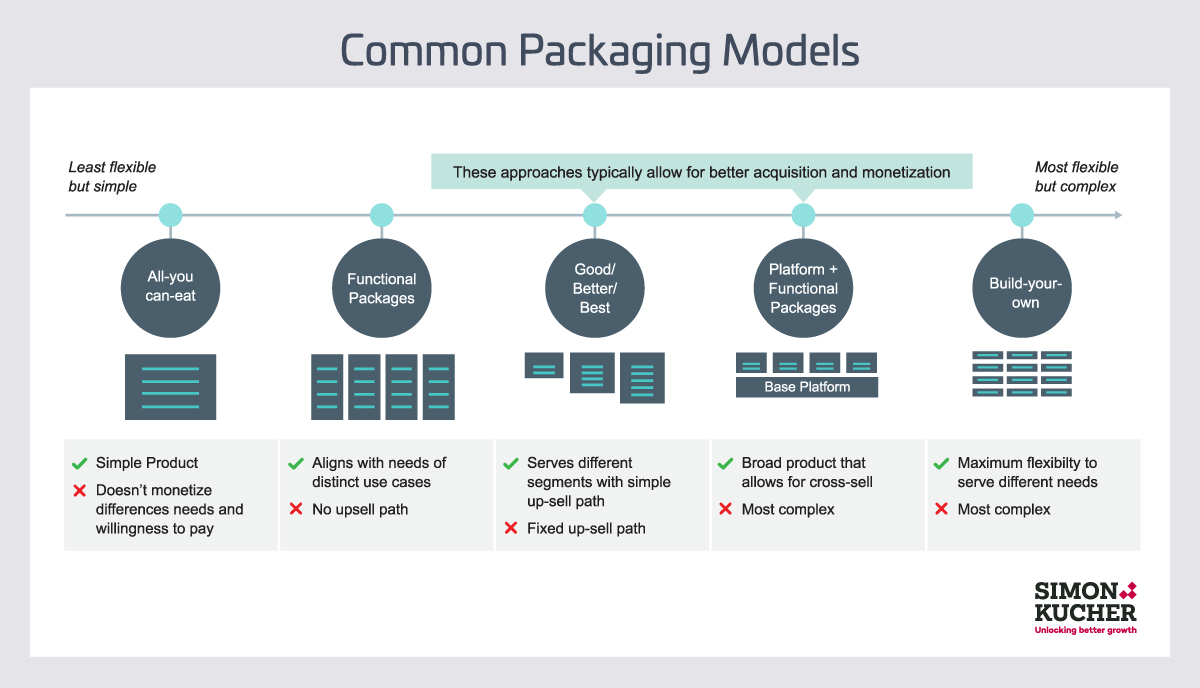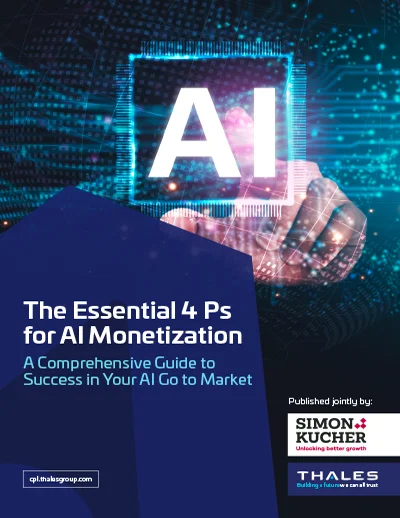
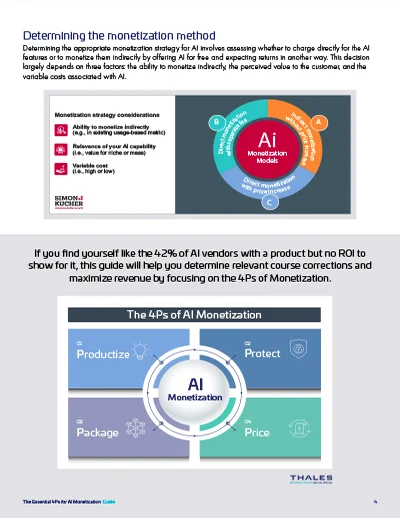
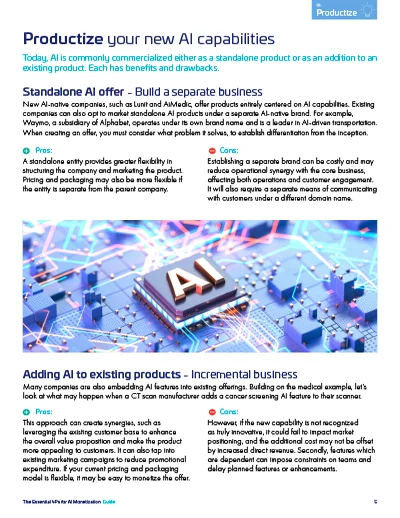
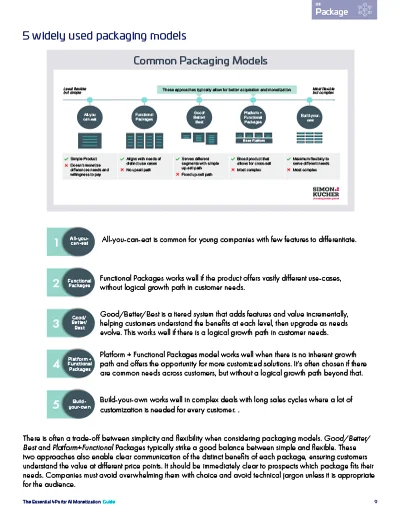
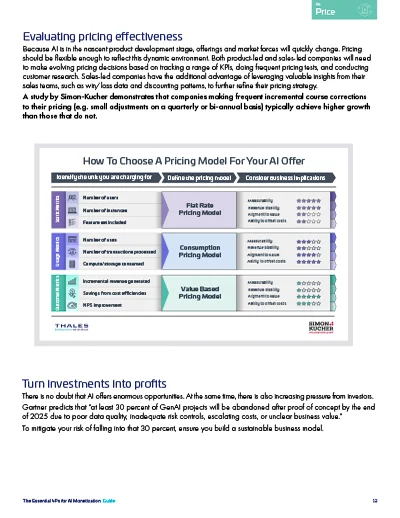
Thales’ Software Monetization and global consultancy, Simon-Kucher, have teamed up to bring you this practical step-by-step guide to making your AI software offer profitable. Rooted in collective experience of 70 years in consulting and operationalizing pricing and packaging strategies, the experts from both organizations have collaborated to review the do’s and don’ts of successfully bringing your AI offer to market. If you find yourself like nearly half of the AI vendors with a product but no ROI to show for it, this guide will help you focus on relevant course corrections.
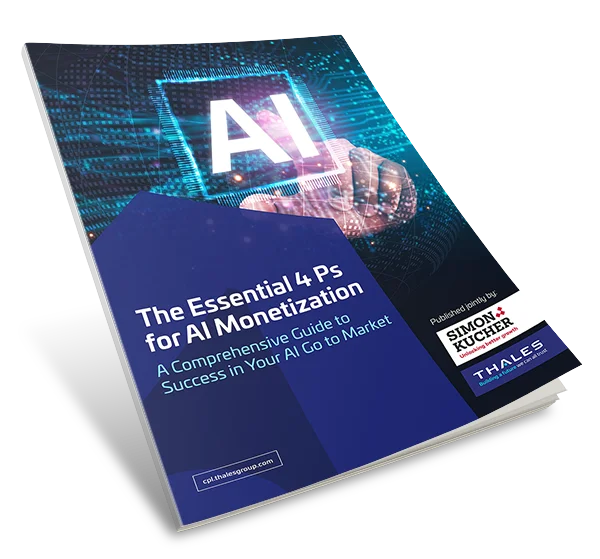


How to create an offer that people want and communicate that value to drive adoption.
A deep dive into the vulnerabilities unique to AI and how to make sure your technology is properly secured.
A look at how flexibly packaging your offer can also serve as an important differentiator.
Should you price based on costs or on value? Determine how to best meet your needs and those of your customers.
software companies already developing or augmented their product with AI features.
- Simon-Kucher
of companies that have released AI products or features are not currently monetizing them.
- Emergence, Beyond Benchmarks 2024
Packaging is a low cost way to grow revenue from existing resources. Gain insights on how these popular packaging models can serve as a powerful differentiator to maximize value and appeal. Plus learn how to operationalize them efficiently and at scale.
There is no doubt that AI offers enormous opportunities. At the same time, there is also increasing pressure from investors. Gartner predicts that "at least 30 percent of GenAI projects will be abandoned after proof of concept by the end of 2025 due to poor data quality, inadequate risk controls, escalating costs, or unclear business value." To mitigate your risk of falling into that 30 percent, ensure you build a sustainable business model.
"At least 30 percent
of GenAI projects will be abandoned after proof of concept by the end of 2025 due to poor data quality, inadequate risk controls, escalating costs, or unclear business value."
- Gartner
Published jointly by:


